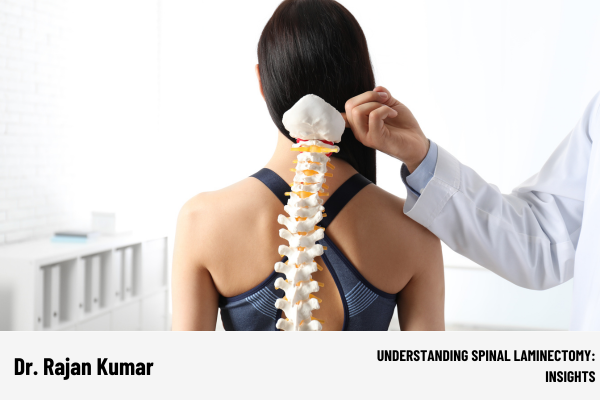Delving into Spinal Laminectomy: Insights by Dr. Rajan Kumar
Spinal laminectomy is a surgical procedure commonly performed to relieve pressure on the spinal cord or nerves caused by conditions such as spinal stenosis or herniated discs. Join Dr. Rajan Kumar, a renowned neurosurgeon in Kolkata, as we explore the intricacies of spinal laminectomy, its indications, benefits, and potential risks for patients seeking relief from spinal compression symptoms.
Understanding Spinal Laminectomy: Procedure Overview
Dr. Rajan Kumar elucidates that spinal laminectomy involves the removal of the lamina, a bony structure that forms the back portion of the vertebrae, to create more space within the spinal canal. This procedure aims to alleviate pressure on the spinal cord or nerve roots, thereby reducing symptoms such as pain, numbness, weakness, or difficulty walking.
Indications and Benefits
Spinal laminectomy is typically recommended for patients with spinal conditions causing spinal cord or nerve compression, including spinal stenosis, herniated discs, bone spurs, or spinal tumors. By decompressing the affected spinal structures, laminectomy can help improve mobility, alleviate pain, and enhance overall quality of life for patients experiencing debilitating spinal compression symptoms.
Potential Risks and Complications
While spinal laminectomy is generally considered safe and effective, Dr. Rajan Kumar emphasizes that all surgical procedures carry inherent risks. Potential risks and complications of spinal laminectomy may include infection, bleeding, nerve damage, spinal fluid leakage, or incomplete symptom relief. However, with careful preoperative evaluation, meticulous surgical technique, and postoperative rehabilitation, these risks can be minimized, and favorable outcomes can be achieved.
Patient Education and Empowerment
In promoting spinal health awareness and empowerment, Dr. Rajan Kumar underscores the importance of patient education and shared decision-making. By providing comprehensive information about spinal conditions, treatment options, and potential risks and benefits of spinal laminectomy, he empowers patients to actively participate in their healthcare journey and make informed decisions that align with their individual needs and goals.
Conclusion
In the skilled hands of Dr. Rajan Kumar, spinal laminectomy becomes a viable option for patients seeking relief from spinal compression symptoms. Through his expertise and dedication to patient-centered care, individuals in Kolkata can trust in his guidance and support as they navigate their spinal health journey with confidence. As we prioritize understanding, collaboration, and personalized care, Dr. Rajan Kumar’s insights illuminate the path towards optimal spinal health and well-being for all.

